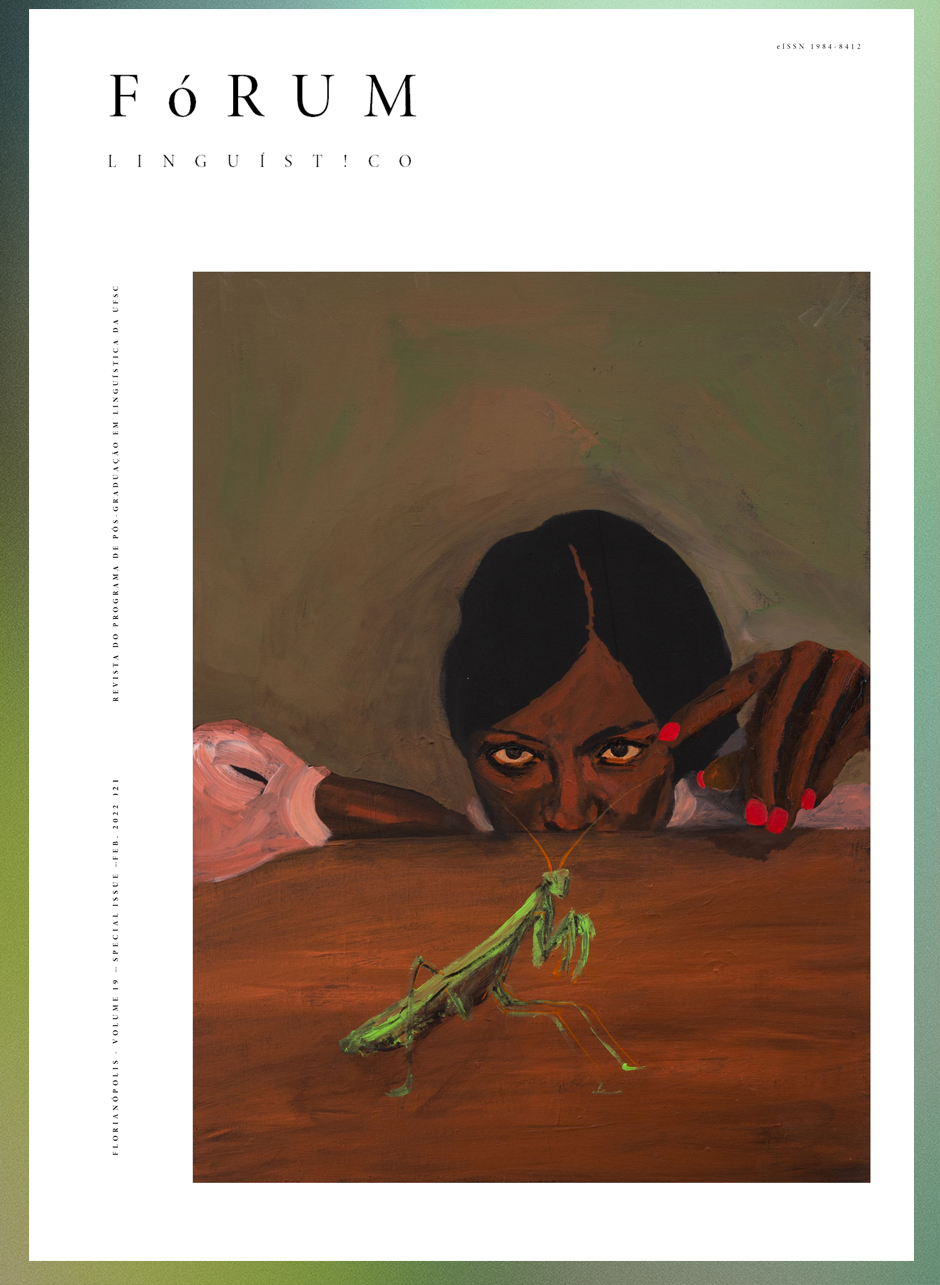On language and its limits
DOI:
https://doi.org/10.5007/1984-8412.2022.e84046Abstract
I consider three positions regarding the limits of language: two (mutually incompatible) ‘segregational’ approaches, which I will contrast with the ‘integrational’ approach advocated by Roy Harris. I shall argue that an integrationist construal of the limits of language cannot be dissociated from the Harrisian concept of ‘radical indeterminacy’. The latter notion is highly controversial within the linguistic orthodoxy, as it sponsors the idea that ‘languages’ qua describable objects are theoretically redundant. In other words, human communication does not involve ‘languages’ from an integrational point of view. However, it is the very notion of ‘a language’ which makes it possible for linguists and philosophers to discuss the limits of language in the first place. My position, in turn, is that the notion of English (German, etc.) as having limits originates in decontextualized analyses at both the lay and professional levels of linguistic inquiry. I thus support the thesis that the limits of language cannot be contemplated independently of the human communicational infrastructure and that these limits are co-extensive with personal linguistic experience.
References
HARRIS, R. The Language-Makers. London: Duckworth, 1980.
HARRIS, R. The Language Myth. London: Duckworth, 1981.
HARRIS, R. Signs, Language and Communication. London: Routledge, 1996.
HARRIS, R. Introduction to Integrational Linguistics. Oxford: Pergamon, 1998.
HARRIS, R. History, Science and the Limits of Language: An Integrationist Approach. Shimla: Indian Institute of Advanced Study, 2003.
HARRIS, R. The Linguistics of History. Edinburgh: Edinburgh University Press, 2004.
HARRIS, R. The Semantics of Science. London: Continuum Press, 2005.
HARRIS, R. Integrationist Notes and Papers 2006-2008. Gamlingay: Bright Pen, 2009.
HARRIS, R. Integrationist Notes and Papers 2009-2011. Gamlingay: Bright Pen, 2011.
HARRIS, R. Integrationist Notes and Papers 2012. Gamlingay: Bright Pen, 2012a.
HARRIS, R. Integrating Reality. Gamlingay: Bright Pen, 2012b.
HARRIS, R. Integrationist Notes and Papers 2013. Gamlingay: Bright Pen, 2013.
HARRIS, R. Integrationist Notes and Papers 2014. Gamlingay: Bright Pen, 2014.
HARRIS, R.; HUTTON, C. Definition in Theory and Practice. London: Routledge, 2007.
HARRIS, S. The End of Faith. New York & London: Norton & Company, 2004.
HAUCK, J.; HEURICH, G. Language in the Amerindian imagination: An inquiry into linguistic natures. Language & Communication v. 63, p. 1-8, 2018.
JOHNSON-LAIRD, P. The psychology of understanding. In: ANTHONY, S. (ed.). The Nature and Limits of Human Understanding. London: Continuum, 2003. p. 1-46.
KUHN, T. The Structure of Scientific Revolutions. 2nd. ed. Chicago: Chicago University Press, 1970.
LOVE, N. On languaging and languages. Language Sciences, v. 61, p. 113-147, 2017.
PENNYCOOK, A. Posthumanist Applied Linguistics. London: Routledge, 2018.
PENNYCOOK, A.; MAKONI, S. Innovations and Challenges to Applied Linguistics from the Global South. London & New York: Routledge, 2019.
PROCTOR, R.; CAPALDI, E. J. Why Science Matters. Oxford: Blackwell Publishing, 2006.
SEALEY, A. Cats and categories – Reply to Teubert. Language and Dialogue, v. 4, n. 2, p. 299-321, 2014.
SEVERO, C.; MAKONI, S. Integrationism and the Global South: Songs as epistemic and frameworks in language studies. In: MAKONI, Sinfree et al. (ed.). Integrational Linguistics and Philosophy of Language in the Global South. London: Routledge, 2021. p. 156-169.
Downloads
Published
Issue
Section
License

This work is licensed under a Creative Commons Attribution-NonCommercial-NoDerivatives 4.0 International License.
Rights including those in copyright in the content of the published works are owned by Revista Forum Linguistico. Complete or parcial reprint should be authorized by the Editorial Board of the Journal. In case of authorization, the source of the original publication must be stated.


